Ray Valley Solar
The largest community-owned ground mount solar park in the UK.
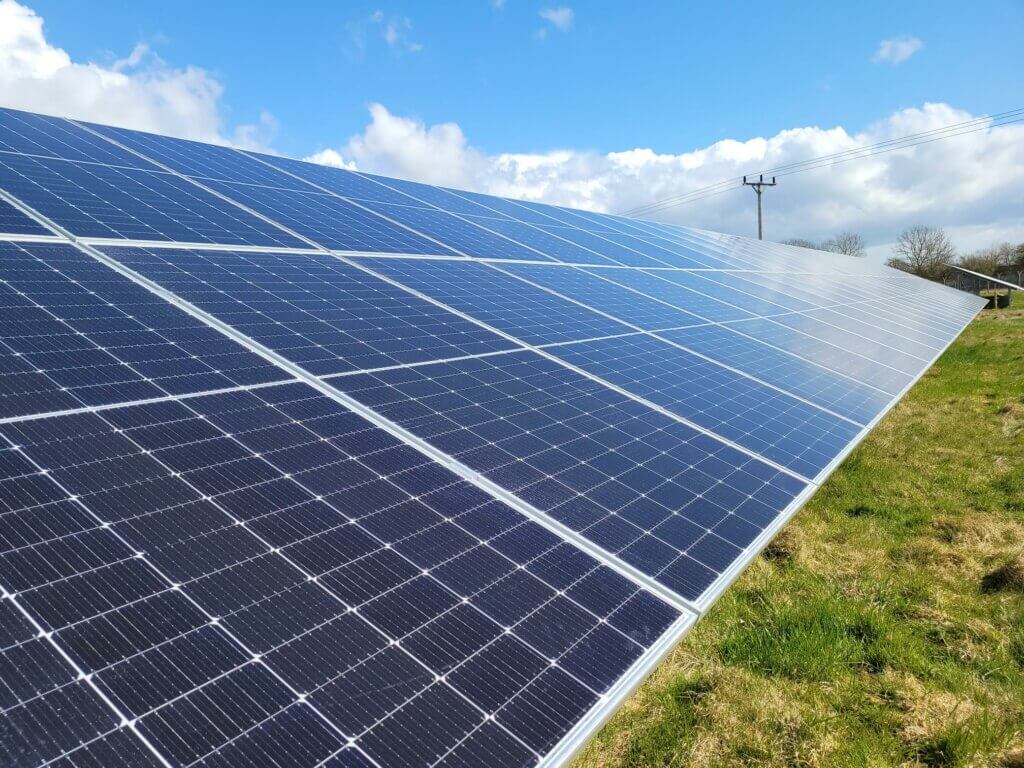
In July 2022 Ray Valley Solar was connected to the national electricity grid. The largest community-owned solar park in the UK is commissioned and starts generating clean energy.
Low Carbon Hub’s first ground mount solar park
Ray Valley Solar is Low Carbon Hub’s first ground mount solar project and has resulted in a five-fold increase in our annual green electricity generation. Situated in Arncott, three miles south east of Bicester, the site neighbours an MOD logistics site, HM Bullingdon prison and two existing solar parks.
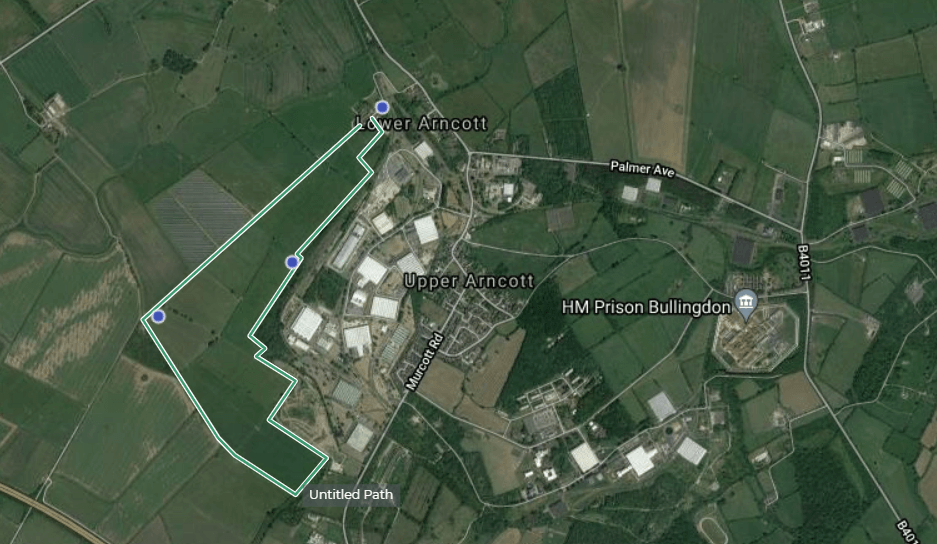
About Ray Valley Solar:
- The largest community-owned solar park in the UK
- It generates 19.5 GWh of clean green electricity every year, enough to power over 6,000 homes
- It keeps £2.6 million worth of energy spend in the local economy each year
- And provide £13 million community benefit funding over the project lifetime
You can find out more about the project in this webinar.
Surpluses produced from Ray Valley Solar will be used to benefit the local community, with an aim to create over £10 million of community benefit funding over the project’s lifetime. The focus of this funding will be on supporting community initiatives that reduce energy demand across Oxfordshire and help tackle climate change – such as grants to support energy efficiency measures and working with schools to bring climate change onto the curriculum.
“We are so thrilled to be building our first ever ground mount solar park, which will have a significant impact on the amount of green electricity produced in Oxfordshire. We are committed to putting community energy at the heart of the new zero carbon energy system.”
Dr Barbara Hammond MBE, CEO, Low Carbon Hub
Project LEO
Project Local Energy Oxfordshire (LEO) is one of the most ambitious, wide-ranging, innovative, and holistic smart grid trials ever conducted in the UK. With our project partners we are conducting real-world trials to understand the role local energy can play in accelerating the transition to a zero carbon energy system.
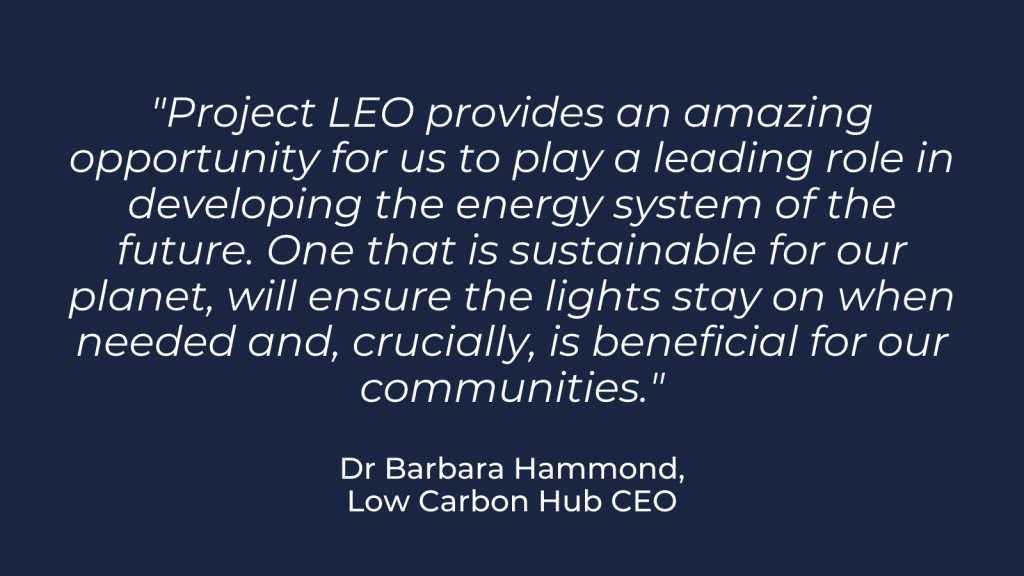
As part of Project LEO, we are developing a virtual power plant in Oxfordshire. We need to significantly increase the amount of renewable energy generation we have available to connect to it. To this end, we have secured our first ground mount solar project, Ray Valley Solar. It will provide an important ‘anchor load’ for the trial and thereby enable us to:
- Run trials to test the system and demonstrate the potential a smart and co-ordinated use of local generation, storage, and demand has in decarbonising the energy system as a whole
- Test innovative local long-term Power Purchase Agreements (PPAs) that would harness local power consumption to make community-owned energy projects financially viable without the need for subsidies such as the Feed-in Tariff
- Future-proof the project with significant potential for battery storage on site
- Create replicable business models for community energy projects at this scale.
In our post-subsidy world, we urgently need these business models to unlock other projects. Our participation in Project LEO enables us to make use of grant funding to help establish viable new business models. These in turn can help reinvigorate the community energy community and help local energy generation and flexibility services accelerate the transition to a zero carbon energy system.
The Build
- 2020 – We acquire the project rights to connect to the national electricity grid.
- January 2021 – the final design is signed off
- February 2021 – We complete our loan agreement with Triodos Bank. The construction contract is signed.
- March 2021 – Our Community Energy Fund share raise reaches the £3 million target in record time.
- May 2021 – construction starts on the site
- January 2022 – the final solar panels arrive on site
- February 2022 – Oxford City Council provides funding of nearly £4.1 million to Ray Valley Solar in the form of a long-term loan
- July 2022 – Connection to the national electricity grid. The solar park is commissioned and starts generating!
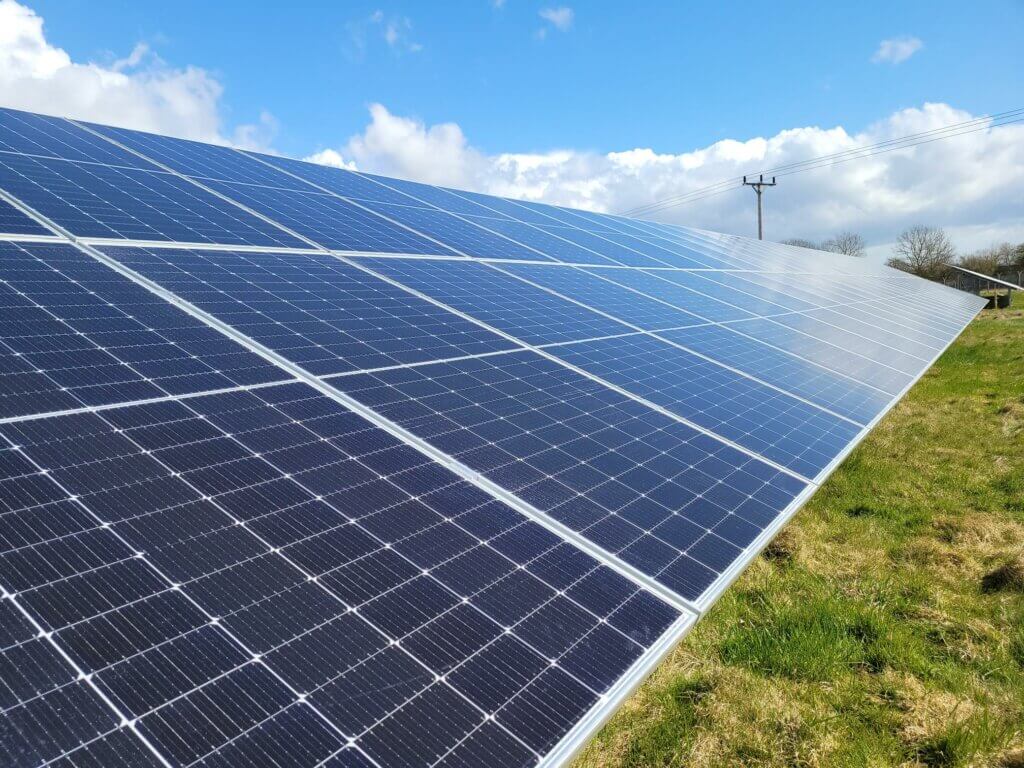
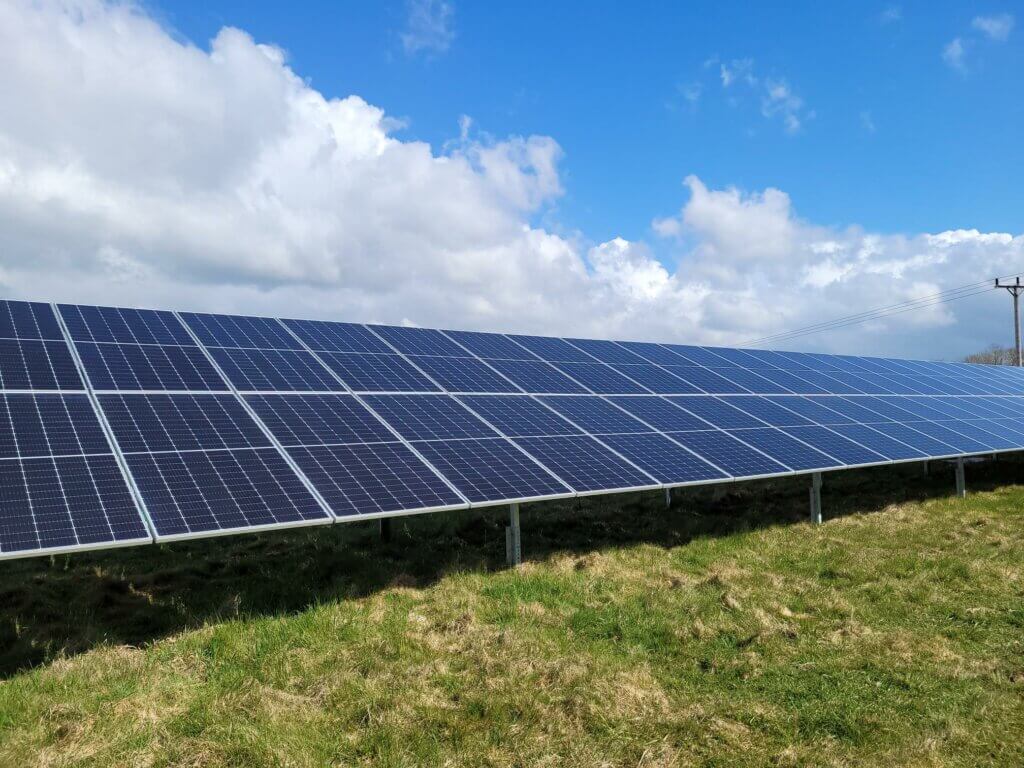
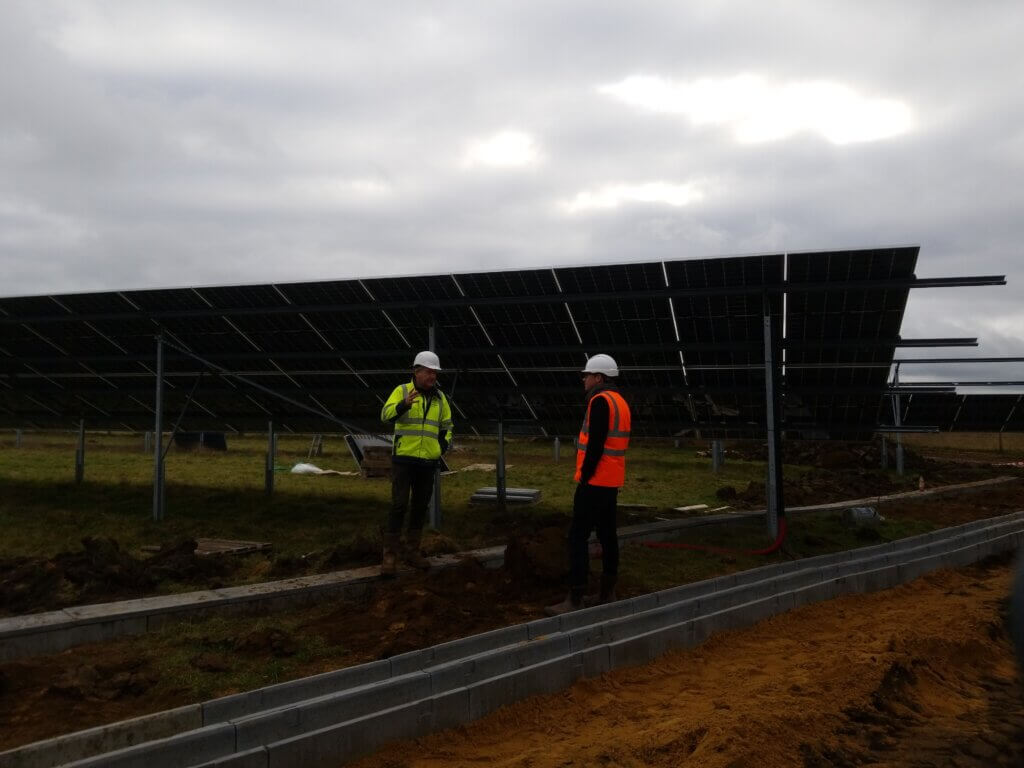
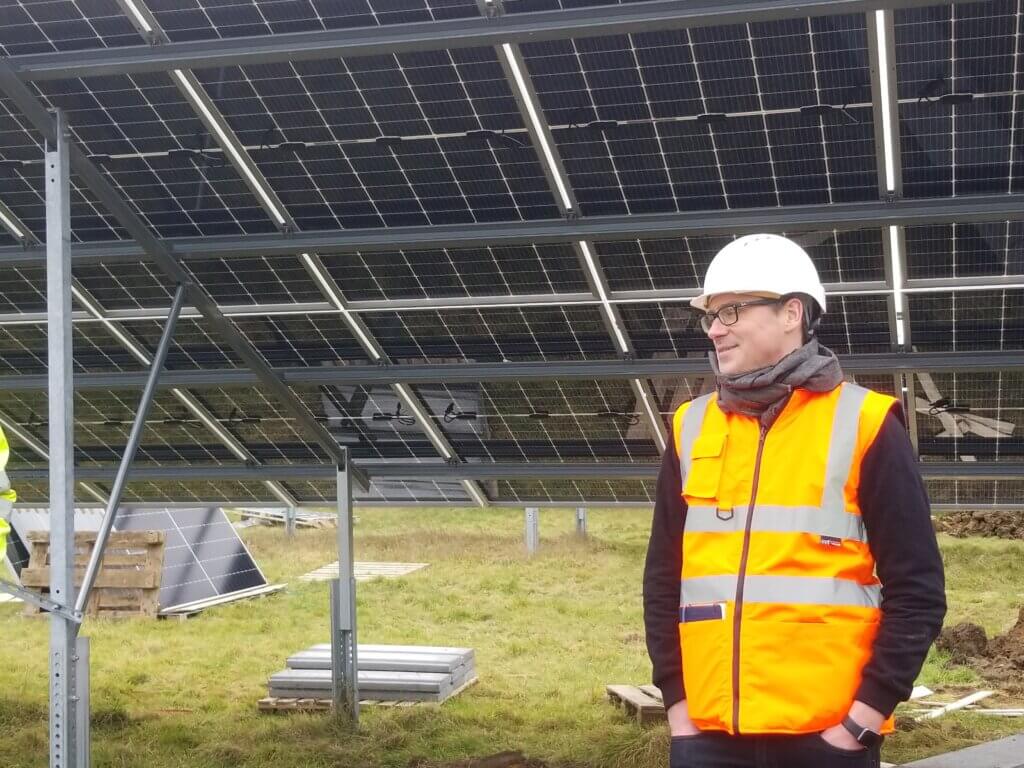
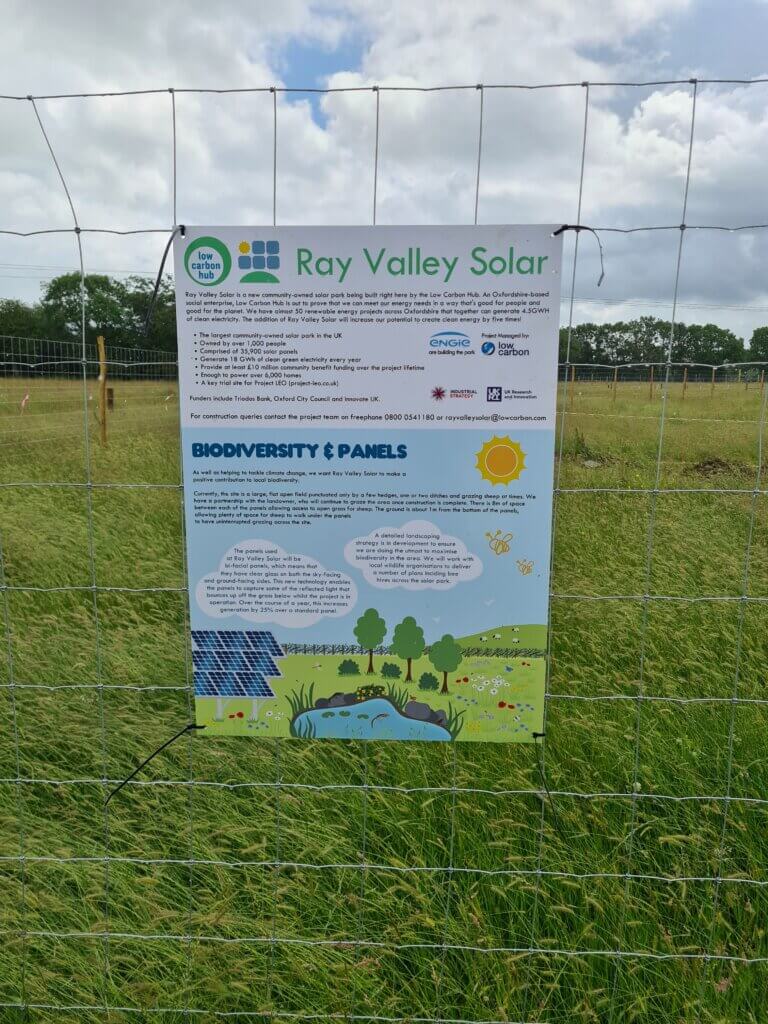
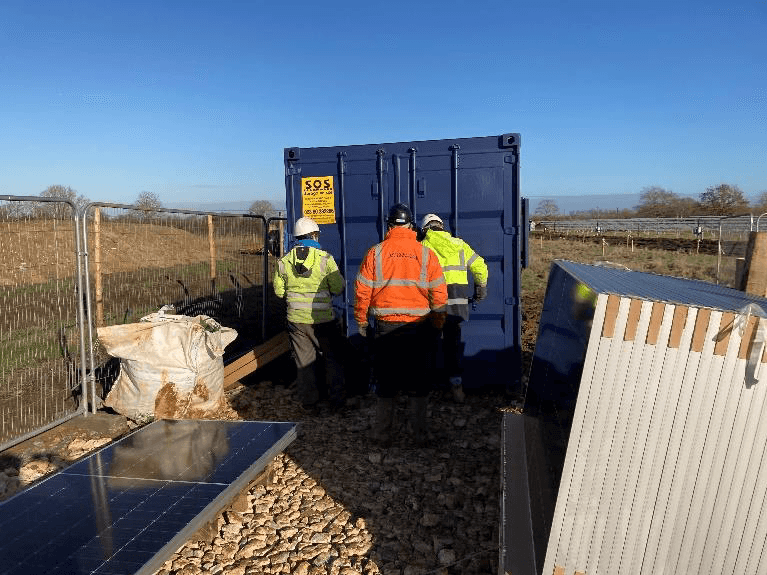
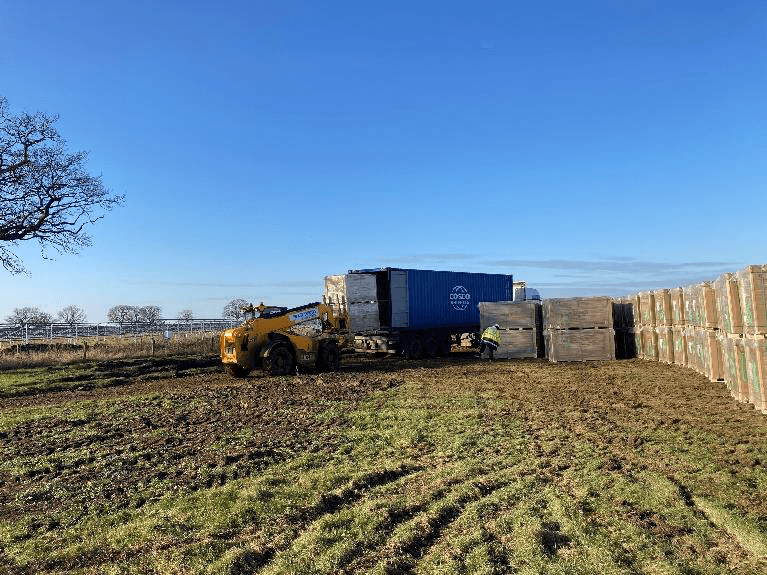
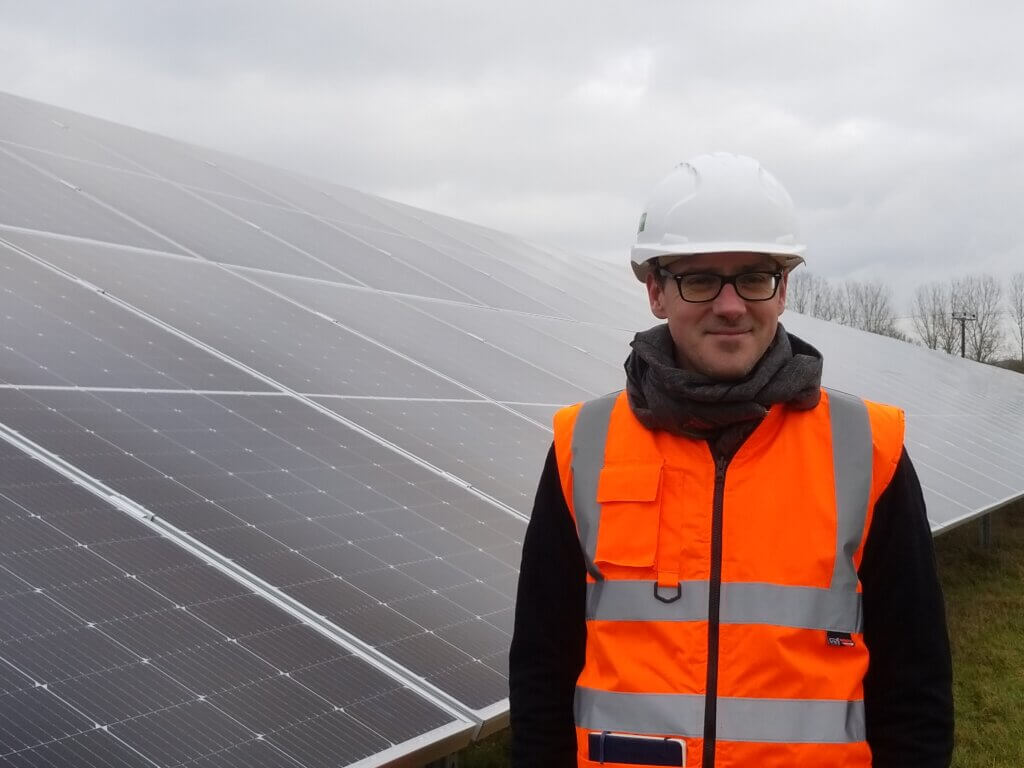
“I think this project is a really good reason to be optimistic about the part ground mount solar can play in meeting our 2030 carbon targets.”
Tom Heel, Business Development Director, Low Carbon Hub
Landscape and Biodiversity
One of the main goals is to enhance the biodiversity of the Site once established and provide additional habitats for a range of wildlife species, including, reptiles, amphibians, mammals and other small animals.
Measures approved include:
- New native species hedges – 3.7 km proposed
- Pond maintenance and implementation – 3 existing ponds and creation of new pond to support Great Crested Newts (present in the area).
- Native aquatic vegetation would be planted in the pond including:
- curled pondweed (Potamogeton crispus),
- common hornwort (Ceratophyllum demersum)
- Plus, a total of over 60 new trees and shrubs around the pond
- Retention of pasture land within the site which is intended to be grazed by sheep (continuation of existing use).
- Creation of Wildflower Grassland around pond areas
- Emorsgate EM4 Meadow Mixture for Clay which will provide a species-rich grassland mix appropriate to the prevailing soil type.
- Consideration of a small bee-hive operation that our Asset Management sub-contractor has implemented on other sites to enhance pollination while producing local honey.
Over the summer of 2021 Low Carbon Hub retained University of Leeds student, Gina Moran, as a Sustainable Research Intern in advance of the construction of Ray Valley Solar. Gina was tasked with researching the available guidance on what is the best social and environmental practice for constructing, operating and maintaining a solar park. This project culminated in the production of the ‘Best Social and Environmental Practice’ guidance document which offers recommendations, informed by the research, on how Low Carbon Hub can achieve the greatest standard of environmental and social sustainability at the Ray Valley Solar site.
FAQs
How did this project come about?
One of our community group members approached us to say they wanted the ground mount solar project in their neighbourhood to be community owned. Unfortunately, that particular opportunity didn’t come to fruition, but it did lead to further discussions with the developer Low Carbon Ltd, which lead to the project which has become Ray Valley Solar.
We also asked our members how they felt about ground mount solar, and the response was overwhelmingly positive towards the development of responsibly managed solar ground mount projects, as part of a wide range of strategies driving to net zero, which gave us confidence to pursue the idea further.
How is the project funded?
Ray Valley Solar is supported by a variety of sources.
We were delighted to raise £4.3 million of new investment in the Community Energy Fund, to support Ray Valley Solar; this project wouldn’t have been possible without their incredible support.
A loan from Triodos Bank has enabled us to develop the project.
Additional loan funding to Low Carbon Hub IPS Ltd from Oxford City Council also supported our delivery of the project.
Finally, the project is supported by grant funding through the Innovate UK Prospering from the Energy Revolution programme, as the solar park will form a key anchor load for trials as part of Project LEO.
As a bank that’s committed to addressing the climate emergency, as well as promoting
social cohesion, we see projects like Ray Valley Solar as vitally important. Not only is
this set to be the biggest community-owned solar park in the country, but the research
and work that Low Carbon Hub and Project LEO are doing will have a wider impact
across Oxfordshire and the UK.We need projects like this to demonstrate that community energy can play a key part in helping us achieve our net zero targets, all while keeping profits within that community to further benefit local people
CHRIS CULLEN, RELATIONSHIP MANAGER AT TRIODOS BANK UK
What is Ray Valley’s role in Project LEO?
Ray Valley Solar was a key trial site for Project LEO – Local Energy Oxfordshire. This was a multi-partner, collaborative project looking to accelerate the UK’s transition to a zero carbon energy system.
Trials at Ray Valley Solar helped us understand how generation assets, like a solar park, can help us balance the grid at a local level.
Through Ray Valley we:
- Ran trials to test the system and demonstrate the potential a smart and co-ordinated use of local generation, storage, and demand has in decarbonising the energy system as a whole
- Tested innovative local long-term Power Purchase Agreements (PPAs) that would harness local power consumption to make community-owned energy projects financially viable without the need for subsidies such as the Feed-in Tariff
- Future-proofed the project with significant potential for battery storage on site
- Created replicable business models for community energy projects at this scale.
Find out more about Project LEO.
Could the land used for a solar park be better used for something else like growing food?
The figures calculated by Professor Nick Eyre at the University of Oxford show that even if 100% of the total energy demand in 2050 was provided by ground mount solar then that would only need 2.5% of the UK land area to accommodate it.
In reality, ground mount solar will only need to provide 20% of our energy needs and this equates to taking up just 0.5% of the UK land area. This is about the same as currently taken up by golf courses across the UK.
Nick Eyre, Professor of Energy and Climate Policy at Oxford University says:
“Opponents of renewable energy often cite the very large land area required. But for solar energy, it is a myth. The UK could supply 20% of the total energy we will need in 2050 using solar panels, by covering only the same area currently used for golf.”
Supply chain
As an organisation run for the benefit of the community, and with an environmental purpose, our aim is to create an energy system that’s good for people and good for the planet. We are aware that all our business activities, from our supply chain and staff travel, the programmes we deliver, and the way we put our profits to use, all have an impact. That’s why we have started to work towards BCORP accreditation. BCORP accreditation measures a company’s entire social environmental performance. The assessment evaluates how a company’s operations and business model impacts on our staff, community, environment and customers. Through this process we aim to identify areas where we can continue to improve.
We are signatories to the UK Solar Industry Supply Chain statement that condemns and opposes any abuse of human rights, including forced labour, anywhere in the global supply chain. The statement also supports applying the highest possible levels of transparency and sustainability throughout the value chain, and commits signatories to the development of an industry-led traceability protocol to help ensure that our supply chain is free of human rights abuses.
